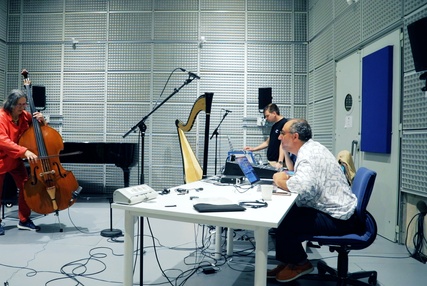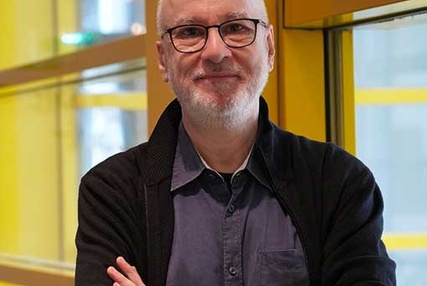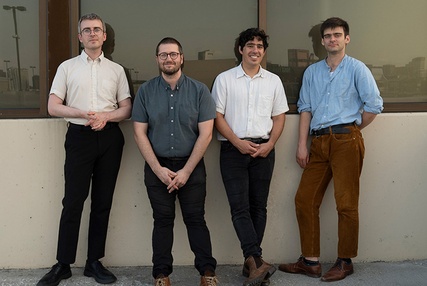À l’heure des intelligences artificielles génératives – ChatGPT, Midjourney… –, le projet REACH porté par l’équipe de Gérard Assayag à l’Ircam pourrait paraître comme un parmi tant d’autres. En vérité, il s’en distingue par bien des aspects, à la fois par son inscription dans le temps, son (ses) mode(s) de fonctionnement et jusqu’à son but recherché.
Car, s’il démarre en 2021, REACH capitalise en vérité sur tous les projets antérieurs de l’équipe Représentations Musicales relatifs à « l’interaction symbolique », initiés avec le premier logiciel d’improvisation humain-machine, le fameux OMax, au début des années 2000, pour les porter à une nouvelle dimension.
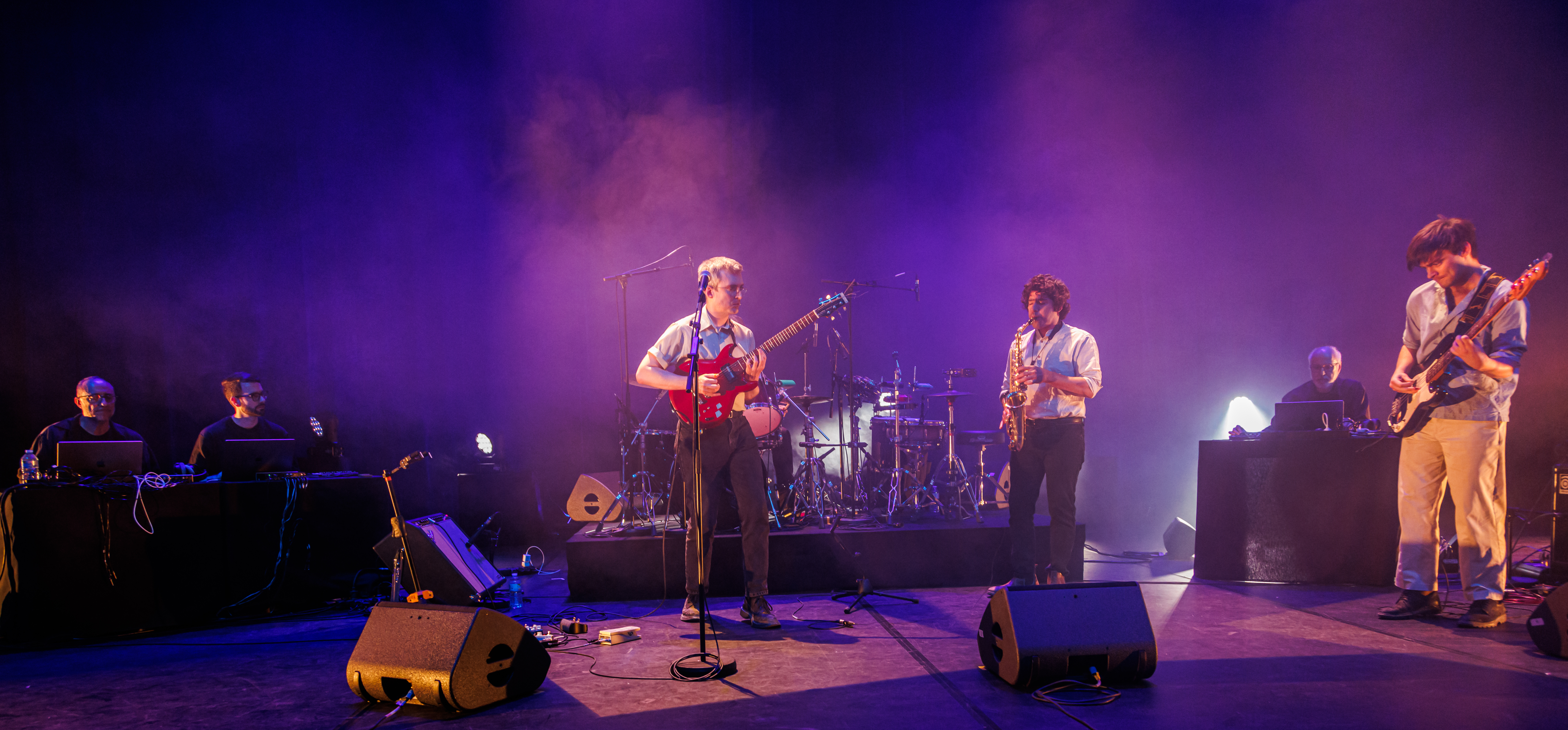 De gauche à droite : Gérard Assayag, Marco Fiorini, le groupe Horse Lords et Michael Malt lors du concert Reaching Out! dans le cadre de ManiFeste 2023 © Hervé Véronèse
De gauche à droite : Gérard Assayag, Marco Fiorini, le groupe Horse Lords et Michael Malt lors du concert Reaching Out! dans le cadre de ManiFeste 2023 © Hervé Véronèse
OMax peut en effet être considéré comme une « IA » avant l’heure : « Le principe de l’IA est de simuler les fonctions supérieures de l’esprit humain, et OMax “simule” un improvisateur » note Gérard Assayag. De plus, s’il n’a pas recours à l’apprentissage profond et autres algorithmes tels que ceux développés par les start-up dont les médias ne cessent de parler ces derniers temps, OMax les annonçait, avec vingt ans d’avance, puisque son principe était d’apprendre la signature stylistique d’un corpus musical donné.
« L’idée est la suivante, explique Gérard Assayag : le style musical est comme un territoire – pour la musique classique par exemple, les différentes tonalités seraient autant de paysages, le rythme, des accidents dans le relief, etc. Quand un musicien joue, ou quand il improvise, il emprunte un chemin dans ce paysage et, ce faisant, il en dévoile une partie – nécessairement limitée. À partir des chemins empruntés par le musicien, OMax va tenter de se constituer une cartographie de l’intégralité – potentielle – du territoire parcouru. C’est ainsi que travaille OMax : à partir d’une instance parmi des milliers, il infère le style, ou plutôt la structure globale qui donne l’idée du style. Après quoi, il joue : c’est-à-dire qu’il se promène à son tour dans la carte qu’il a lui-même dessinée. Ce qui explique que ce qu’il joue ressemble à ce dont on l’a nourri, formant comme des variations inédites et cohérentes. »
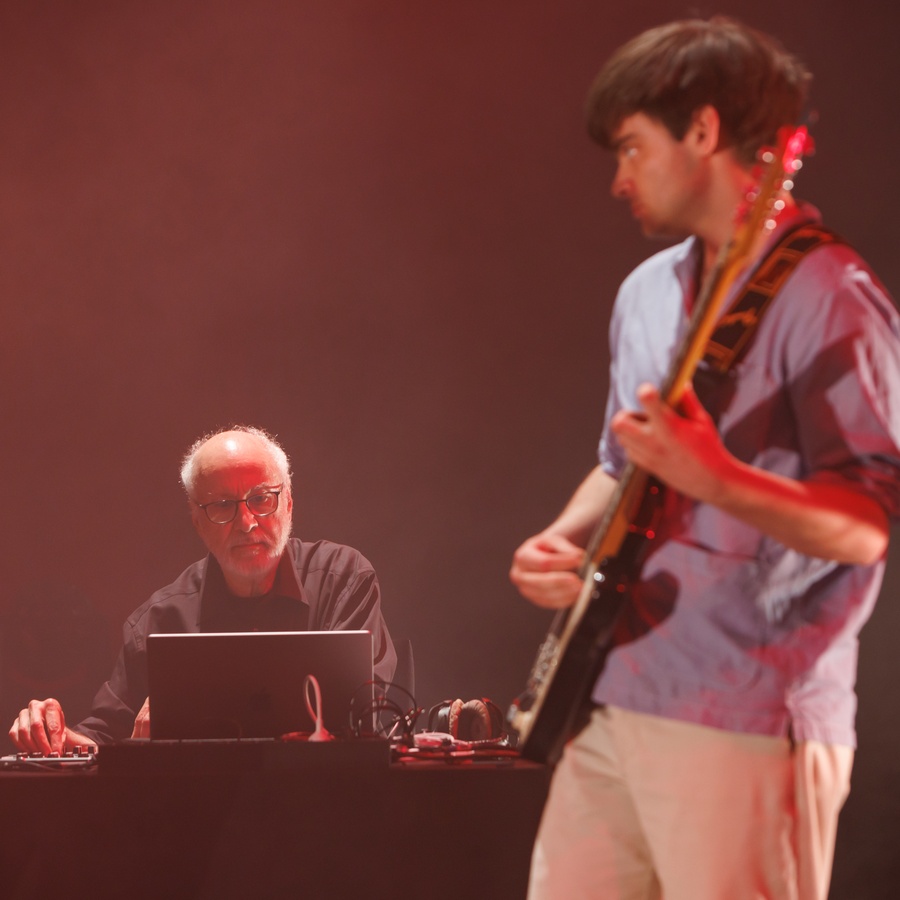 Mikhaïl Malt lors du concert Reaching Out! dans le cadre de ManiFeste 2023 © Hervé Véronèse
Mikhaïl Malt lors du concert Reaching Out! dans le cadre de ManiFeste 2023 © Hervé Véronèse
Quant au but recherché, ce qu’on attend des logiciels développés dans le cadre REACH n’est pas de générer du contenu indifféremment ou suivant une demande plus ou moins précise faite par l’utilisateur (ce qu’on appelle un « prompt »). « Ce n’est pas notre sujet », insiste Gérard Assayag. Nous ne nous intéressons pas à une machine qui serait créative par elle-même — quoi que cela veuille dire ! – mais à ses interactions avec des musiciens. La notion de co-créativité doit ainsi être considérée comme phénomène “d’émergence” dans le système complexe formé par le musicien et la machine, système dans lequel chacun écoute, apprend constamment de l’autre et développe un parcours adaptatif. Ainsi, des formes musicales inédites et produites de manière conjointe dans une double boucle de rétroaction apparaissent qui ne se réduisent ni à l’action de l’un ni à celle de l’autre mais n’existent que dans l’être fugitif de l’interaction. C’est donc un tout nouvel univers qui s’offre désormais à l’imagination et les résultats auxquels nous arrivons sont indubitablement des “créations”. »
Une recherche qui semble, en filigrane, appeler à sortir des postures figées pour revenir à une réflexion sur le terme même « créativité » tel qu’il est utilisé dans le débat sur l’intelligence artificielle. Une réflexion qui tient au moins autant du politique que de l’esthétique…

Dans un prochain épisode, nous irons à la rencontre de Mikhaïl Malt…



 De gauche à droite : Gérard Assayag, Marco Fiorini, le groupe Horse Lords et Michael Malt lors du concert
De gauche à droite : Gérard Assayag, Marco Fiorini, le groupe Horse Lords et Michael Malt lors du concert  Mikhaïl Malt lors du concert
Mikhaïl Malt lors du concert 